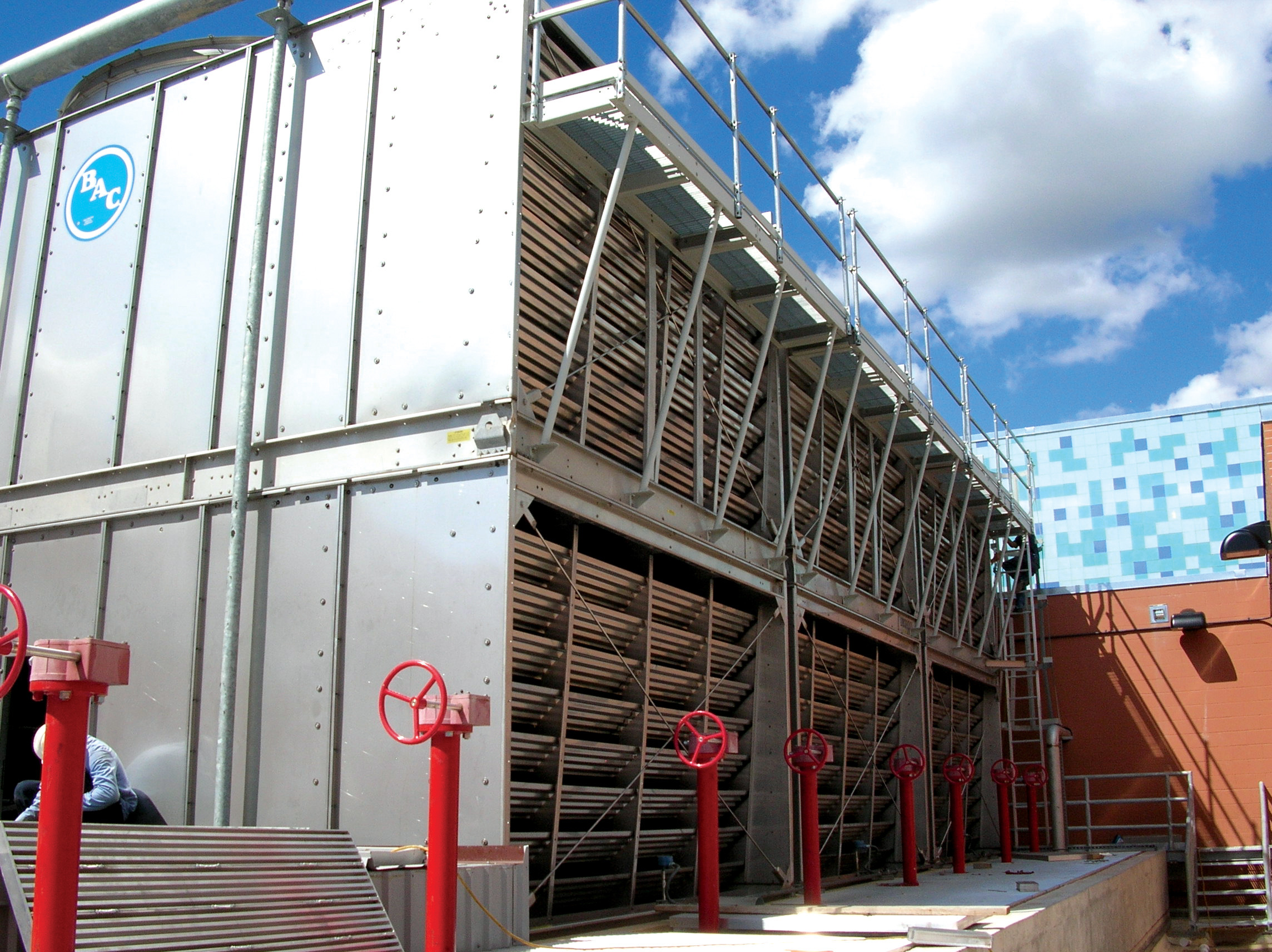Cooling Tower and Condenser Water Design Part 3: Understanding Tonnage, Range, and Approach
/By Chad Edmondson
Last time we talked about the impact that the wet bulb temperature has on cooling tower performance. In summary, it’s harder to evaporate water into air that’s already wet. (I.e. The higher the wet bulb, the harder a cooling tower has to work to evaporate enough water to maintain set points.) In this blog, we’re going to define what those set points are, how cooling towers are rated, and finally how these factors impact the cooling tower size and operation for a given application.
Like chillers, cooling towers are rated in terms of tonnage – specifically how many BTU/Hr they can disperse through the heat of vaporization. As we mentioned in Part 2, what is known as a “refrigeration ton” differs somewhat from what is known as a “cooling tower ton”. A refrigeration ton is equal to 12,000 BTU/hr. A cooling tower ton is 15,000 BTU/hour. The extra 3000 BTUHs is carried over from the refrigeration cycle.
Remember that in Part 1, we learned that the refrigerant entering the compressor during the refrigerant cycle carries with it the BTUs transferred to it from the chilled water loop. As it enters the compressor this refrigerant is in a low pressure/low temperature gaseous state. The compressor “pumps up” the refrigerant into a high pressure/high temperature state. This process requires energy, basically adding (on average) 3,000 BTU/hr of compressor heat to cooling tower load. Thus, the Cooling Tower Institute (CTI), the agency responsible for developing the rating system for all cooling towers, has designated that a cooling tower ton is 15,000 BTU/hr or 12,000 BTU/hr (Refrigeration Ton) + 3000 BTU/hr (Compressor Heat).
How Cooling Towers Are Rated
The CTI rates all cooling towers based on the following design conditions:
- 95°F/85°F @ 78°F wet bulb
- 10°F Range and 7°F Approach
- 3 GPM per Cooling Tower Ton
This means that the operating parameters at which cooling towers are rated are based 3 GPM of condenser water entering the cooling tower at 95°F and leaving the cooling tower at 85°F under 78°F degree wet bulb conditions. It’s a snapshot of a common operating design condition, which puts all cooling towers on a comparable playing field. It does not mean that these are the design conditions that you should use when selecting a cooling tower. As we discussed in Part 2, it is important to use the design wet bulb conditions for your part of the country when making a cooling tower selection.
Range and Approach
If you are still getting your bearings with cooling tower design terminology, you may wonder what the terms “approach” and “range” mean. Approach is the temperature of the water leaving the cooling tower (in this case, 85°F nominal) minus the ambient web bulb temperature (78°F wet bulb) or 7°F. This value represents how close the cooling tower gets the water to the wet bulb temperature of the surrounding air.
The “range” is very simply the difference between the entering water temperature and leaving water temperature. Remember, ambient wet bulb is the lowest temperature under which evaporation can occur under a given set of conditions. Thus, cooling towers are sized based on the design wet bulb of a region – not the sensible (dry bulb) temperature.
How Range Impacts kW
Just because cooling towers are rated at these particular conditions doesn’t mean they have to be sized to operate at these exact parameters. Cooling towers can and often are designed to operate at ranges that are higher or lower than 10 degrees. But there are a couple of things to keep in mind.
Increasing the range, say from 10° to 15° will reduce the GPM from 3 to 2 GPM per cooling tower ton which means less pump horsepower. However, if the entering water temperature is 100°F and the leaving water temperature is 85°F, that yields an average condensing water temperature of 92.5°F, versus an average 90°F if you designed it to operate at 95°F/85°F. The higher the condensing water temperature is, the harder the chiller has to work, which increases kW consumption at the compressor. So, choosing the best operating range for your cooling tower means comparing kW consumption for both the pump(s) and the chiller under various scenarios. There is no right answer, as the most efficient design depends how the rest of the system will be designed.
Also, the higher the approach, the smaller the cooling tower can be; the lower the approach, the larger the cooling tower will be. So first cost budgets may also impact your decision.
Your JMP sales representative can help you work through the different scenarios so that you make the best decision for a given project. But all cooling tower designs should be approached with a working knowledge of these basic principles.



